 The benefits of knowing how to read wine labels and understanding of wine law common for EU are discussed in the article “Learn to Read Labels. Europe.” Here, I will be talking about things that are specific to France. I will not be returning to the basics, so I highly recommended reading the article about Europe first, as it is quite important for understanding this one.
The benefits of knowing how to read wine labels and understanding of wine law common for EU are discussed in the article “Learn to Read Labels. Europe.” Here, I will be talking about things that are specific to France. I will not be returning to the basics, so I highly recommended reading the article about Europe first, as it is quite important for understanding this one.
This is the pyramid of principle wine hierarchy in French terms.
Vin de France (Vin de Table in traditional terminology) and Indication Geographique Protegee (Vin de Pays) are not actually French-specific, so we will not be going over them.
What we will talk about is at the top of the pyramid – Appellation d’Origin Protégé (AOP) or Appellation d’Origin Controlee (AOC) in traditional terms. France has several hundred AOCs. They are often hierarchic, and every sizeable region has its own approach to establishing its own type of hierarchy. Many regions also have their own local terms to grade the wine or show its peculiarity.
France has about 12 distinct major wine regions (although this is not official, as some would, for example, name Beaujolais as a separate region, but others would combine it with Burgundy). They are geographically separated, and historically their winemaking developed with relative independence from one another. We will see that as we go into each region. I won’t have the time or the space to write about all of the wines that are produced in each region – this is would be enough material to catalogue in a rather large book, and many such books have already been written. What I will be going over are the terms that can be found on wine labels in these regions and what they mean to say about your wine choice.
Once more, everything that is described below is about wine that falls into the AOC category only. We won’t be talking about all of the wines produced in any given region, as any given region will also produce Vin de France and PGI. Thus, when I mention, for example, that a wine is of the lowest quality level, I mean the lowest quality level among AOC wines, and not all wines altogether. Therefore, even the lowest level wine discussed here would fall into a high quality category.
Discussed information on the labels are underlined with red.

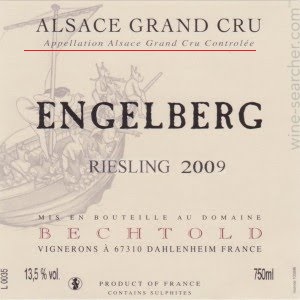
Let’s start with Alsace. It has a simple approach to classification with only two levels of AC.
The lower level is Alsace Appellation Controlee (Alsace AC). The term Vin d’Alsace can also be used instead. For Alsace AC label, the wine must be produced in Alsace according to the established rules for the region. A rule for Alsace AC is that the wine must be bottled in a particular type of bottles, called flutes d’Alsace, which are tall and have a specific shape.
The second and highest level is called Alsace Grand Cru AC. This label encompasses wines from specific vineyards (cru) that have been designated for their high quality. The name of the vineyard, the vintage and the grape variety (unless it is a blend, but blends are rare in the Alsace) must be shown on the label.
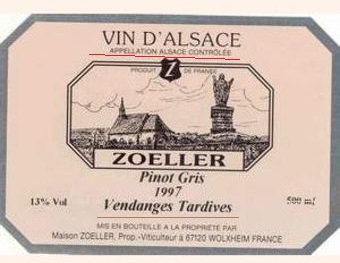
Two additional Alsace-specific characteristics can be found on the label.
Vendange Tarvide (VT – “late harvest” – indicates that the wine is made from grape with high levels of sugar. This is achieved by keeping ripened grape on the vine until it loses some water and its sugar content becomes more concentrated. The grape can be partly botrytised. Such grape is used for very high quality wine production. The wine itself can contain any level of sugar, from dry to sweet. It is not required from the winemaker to indicate residual sugar (sugar that is actually present in the wine) on the label.
 Selection de Grains Nobles (SGN) – indicates that the wine is made from botrytised grape. This is a high quality sweet wine.
Selection de Grains Nobles (SGN) – indicates that the wine is made from botrytised grape. This is a high quality sweet wine.
For specifics about sweet wine production and the types of sweet wines, you can read the “Wines for the sweet tooth” article.
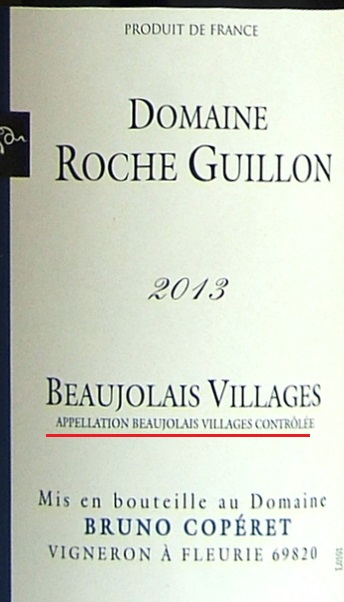
Beaujolais increases the AC hierarchy up to the three levels.
The basic level is Beaujolais Appellation Controlee (Beaujolais AC). The wine must be produced in the Beaujolais region according to the established rules.
The second level is Appellation Beaujolais Villages Controlee. About forty villages are granted the right to this AC. This AC is common for all of them. Sometimes the name of the village can be mentioned on the label, but separately, not as part of the AC. A village in this case is a group of vineyards clustered together (provisionally, around some village). The vineyards have different owners (village inhabitants), but every winery in the village produces a similar type of wine and the requirements for wine quality are the same for the whole village.

The highest level is Beaujolais Cru. The ten villages (cru) of Beaujolais have their own unique ACs. Each such AC corresponds to the name of the village, for example, Appellation Fleurie Controlee. Please note that in this case, the name of the region (Beaujolais) is not presented in the AC. However, the producer usually mentions the region somewhere on the label. It is not a requirement, so sometimes you will not be able to find this information, but more often you will.
Places where this information can be found on the labels are underlined with blue.

Sothern Rhone has a similar, but yet more extended hierarchy system of AC.
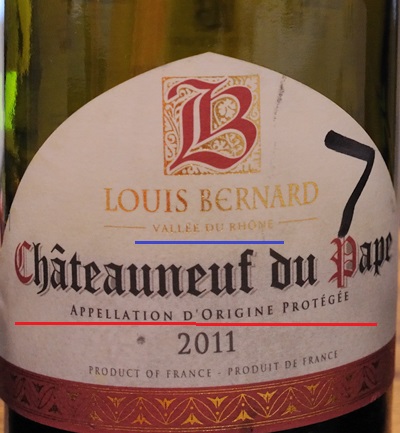
The lowest level, Cotes du Rhone AC, is the wine produced anywhere in Southern Rhone according to the established rules.
The second level is Cotes du Rhone Villages Appellation Controlee.
Eighteen villages are granted a right to add their own name to the Village AC. For example, Cotes du Rhone Villages Cairanne Appellation Controlee. This is the third level.
The highest level is AC for individual villages – Cotes du Rhone Cru. For example, Chateauneuf-du-Pape AC. By the way, Chateauneuf-du-Pape is the first place that got AC status in France, and the wine is famous worldwide. (Curiously, the Chateaneuf-du-Pape label reads AOP instead of AOC. They are slowly changing towards the newer terms).
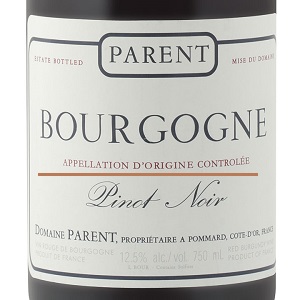
Burgundy has even more levels than Southern Rhone.
The basic regional level is Bourgogne AC. The wine can be produced anywhere in Burgundy. The most notable examples are Bourgogne Aligote AC, Bourgogne Rouge AC, Bourgogne Blanc AC. The first one must be made from Aligote, while the second and third – from the best regional red and white varieties respectively. For Burgundy this usually means Pinot Noir and Chardonnay. There are several exceptions where wine of this level must be made in a specific region. However, the word Bourgogne would be included in the AC name anyway, as in for example, Bourgogne Cote Chalonnaise AC. Thus, if the AC name contains the word Bourgogne, it is the lowest level AC for Burgundy. Pay attention that this is true for the word Bourgogne specifically in the AC name, not anywhere else on the label. If you see expression Burgundy wine or Grand vin de Bourgogne, this just means that the wine is produced in Burgundy. Such phrases can be found on the labels of any AC level.
The second level is commune AC. It represents a group of vineyards on one specific territory that produce a similar type of the wine. The name of the commune is present in the name of the AC. For example:
Beaune
Appellation Beaune Controlee
The producer may mention the name of a specific village, but separately, and using smaller letters.
Beaune
Lulune
Appellation Beaune Controlee
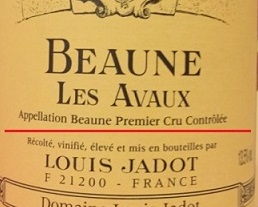
The third level, Premier Cru, is for the villages (cru) whose wines stand out from the ones made by the commune in terms of their quality. In such cases, AC contains the name of the commune and the words Premier Cru, while the name of the village is set separately.
Two variants that can be found on the label:

Beaune (commune)
Greves (cru)
Appellation Beaune Premier Cru Controlee
Beaune
Greves Premier Cru
Appellation Beaune Premier Cru Controlee
The highest level, Grand Cru, is for the villages that produce exceptional wines. In this case, AC refers to the name of the village, not to the name of the commune.
Montrachet
Grand Cru
Appellation Montrachet Controlee

The Maconnais region has some deviations from common Burgundy rules. Two more levels of AC hierarchy are inserted between regional and commune levels.
The lowest specific level (just above regional level Bourgogne AC) is Maconic AC. These are wines that are produced anywhere in the Maconic region.
The next specific level is Maconic Villages AC. This AC covers 43 different villages around the Maconic region. The label therefore represents the combined level of wine quality, not the type of wine produced by all these villages. Maconic Villages AC or Maconic + Village name AC would be found on the label.
Commune AC, standard for all of Burgundy, follows the Maconic Villages AC as the next higher level.
Bordeaux
If Burgundy offers a developed hierarchical AC system, Bordeaux adopted a very simplistic approach.
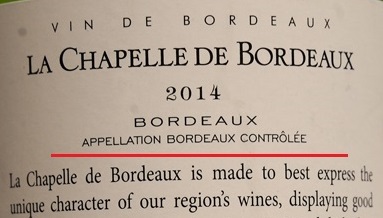
The traditional basic regional level is represented by the following – Bordeaux AC, Bordeaux Superieur AC, Bordeaux Rose AC, Bordeaux Clairet AC. These wines can be produced anywhere in Bordeaux. Pay attention to the word Bordeaux in AC name.
The second and last AC level refers to regions inside Bordeaux. There are more than 50 such sub-regions, and they can cover areas of very diverse sizes, from whole wine countries like Medoc to small individual chateaus. For these wines, the Bordeaux origin is indicated on the label, but it is usually written separately from the AC. If you see ‘Vin de Bordeaux’ somewhere on the label, and additionally see some AC (for example, Medoc AC or Margaux AC) – this is it.
On the one hand this is easy: you don’t need to remember a complicated system. On the other hand, this makes choices more difficult. Bordeaux is the biggest wine region of France. Most world-famous wines are produced here, but, at the same time the amount of low-quality wines from this region is huge. There is of course a rating of all ACs from the 50 provinces, but it would require one to memorize 50 names that are not formally arranged by rank or associated qualities. A futile task, given particularly that the AC rating from any of Bordeaux’s sub-regions is not all that informative.
What is more informative is the following. Bordeaux has five separated wine regions: Medoc, Graves, Sauternes, Saint-Emilion and Pomerol. All of them tried to classify their own wines based on a system of their own creation. Their unique traditional systems bear no relation to the AC, as many of them pre-date its appearance. Some of the older systems are still in use and can be quite helpful in wine selection. They do not cover all regions and chateaus, but they are a good guidance for what they do cover.
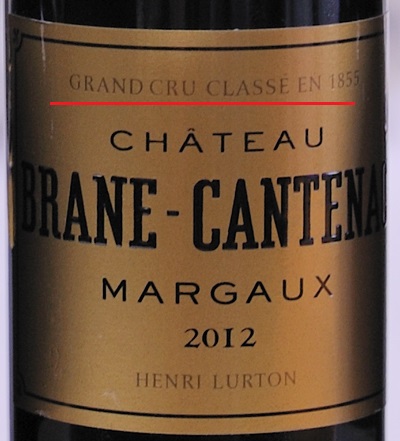
Medoc
Ahead of the Paris International Exhibition in 1855, Medoc classified its best chateaus (not all, but only the best at that time) into five ranks. All of them are Grand Vin, which (it can be also mentioned on the label. The ranks are as follows, from highest to lowest:
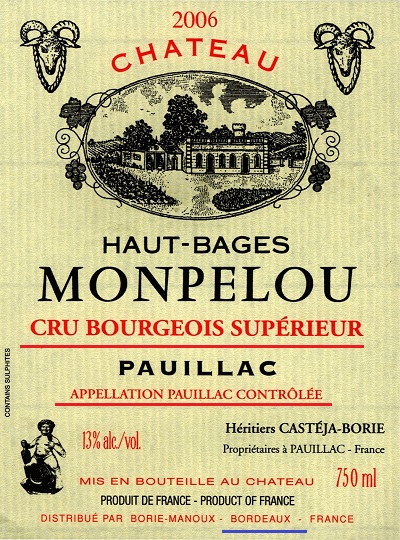
Premier Grand Superieur
Premier Grand Cru Classe
Grand Cru Classe
1 Grand Cru Classe
2 Grand Cru Classe
Because this system classified only some chateaus, in 1932 the Cru Bourgeois system was invented for the rest of them. These are, again, the titles only for the best chateaus that were not classified by the Grand Cru system.
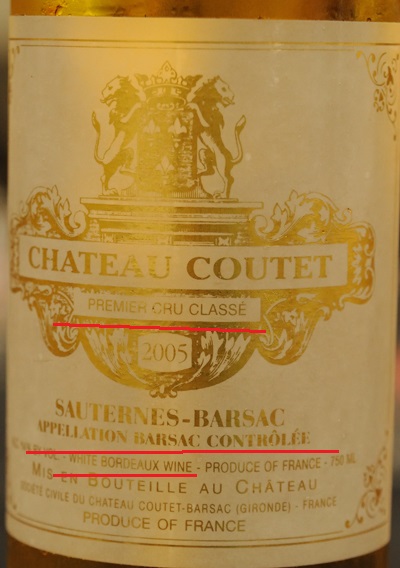
From best to worst:
Cru Bourgeois Exceptionnels
Cru Bourgeois Superieur
Cru Bourgeois
Everything changes in time, and by 2003 it was clear that the titles needed to be redistributed, based on more current deserving candidates. However, attempts at reshuffling the titles among wineries led to the collapse of the entire system. In 2009, the Сru Bourgeois system was abolished from use in chateau classification, but was adopted for classifying only specific wines. A winery may promote its wine (specific wine of a specific vintage) for approval. Following consideration of the wine’s taste characteristic, the committee may give the wine one of Сru Bourgeois titles. Thus, if Сru Bourgeois wine is 2008 or older, the title is refers to the chateau, but if the wine is 2009 or younger, the title refers to the specific wine. This is something worth paying attention to.

Sauternes classified its best chateaus together with Medoc in 1855, only it has three rather than five ranks:
Premier Grand Superieur
Premier Grand Cru Classe
Grand Cru Classe
Interestingly, only one chateau in all of Bordeaux, Chateau d’Yquem, has the highest rank of Premier Grand Superieur. This chateau is located specifically in Sauterne.
In 1959 Graves created the list of its best chateaus. It is not hierarchic, and all of the chateaus that made this list are marked as Cru Classe.
Saint-Emilion was the only region that chose to partly integrate its own classification system into the AC system.
Its third AC level (the rest of Bordeaux has two) is Saint-Emilion Grand Cru AC. The best of Saint-Emilion chateaus from this AC level (as well as those outside AC system) are marked as Saint-Emilion Grand Cru Classe.

From the remaining regions, only Southern France has some sort of hierarchy.
Two of its regions, Languedoc and Provence, have their regional ACs, Languedoc AC and Cotes de Provence AC, respectively. There are some smaller ACs of higher level inside the regional ACs (similarly to Bordeaux).
The rest of France, including Northern Rhone and Loire Valley doesn’t have any systematic hierarchy, neither according to the AC system nor to any other.
Below is a sort of cheat-sheet for the information in this article.
Make your choice knowledgeable!
